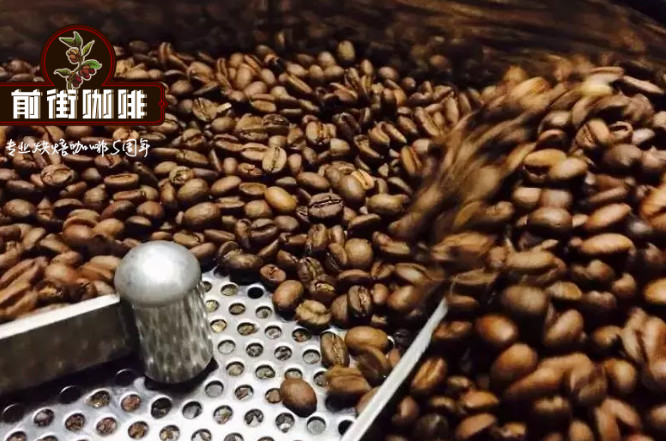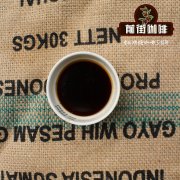How to judge the quality of coffee beans? How to tell if coffee beans are fresh?

Professional coffee knowledge exchange more coffee bean information please follow the coffee workshop (Wechat official account cafe_style)
The judgment of the quality of coffee beans
Good baked beans have no color spots, and the heat is uniformly connected from the outside to the inside, almost no defective beans can be seen as a whole, incomplete baking, good expansion, and good-looking tone and gloss formed by firepower can be called good-quality baked beans. Coffee beans wrapped in soot during baking can be distinguished by their appearance because the black fine particles are attached to the beans, so that the surface of the beans will blacken and look dirty.
To judge whether the baking is good or bad, in addition to the method mentioned above, you can also use fingernails and knives to cut the coffee beans to observe its cross section, or grind a few coffee beans and spread them out to see if they have the same hue. Another way is to take out two or three coffee beans and bite them. If they are crunchy, they will crack as soon as they bite, and they will not only bite hard, but also contain the entrance. They will feel very fresh, and the bitter taste accompanied by the aroma will spread all over the tongue, which means it is a good baked bean. In addition, it is based on whether the aroma is reduced as the standard, because the aroma is the life of coffee, that is to say, how much the aroma disappears, it represents the deterioration of its quality.
The tasting life of light-roasted coffee beans is affected by the acid composition. If the freshness becomes worse and there is moisture during preservation, oxidation will bring a strong and unpleasant taste and smell, especially new beans. For the preservation of deep-roasted coffee beans, special attention should be paid to the foul smell and scorched smell caused by firepower, exhaust and cooling, and more attention should be paid to fat. The surface of deep-roasted coffee beans will ooze fat that can not be seen by shallow baked beans. If the preservation period is prolonged, the effects of sunlight and temperature will promote fat oxidation, making it produce a unique stench, and the sealed way is used to keep the coffee beans fresh. But this will cause the temperature in the container to rise, and such a vicious circle will promote its deterioration, and the rotten smell it produces can not be emitted because the container is airtight, and when filled with the container, it will strongly seep back into the bean, aggravating its deterioration.
Based on the point of view of oxidation caused by contact with air, vacuum packaging or filling with inactive gas (gas) is generally adopted, but no matter how well the packaging is done, we should pay attention to sealing the fresh coffee beans. In addition, with the sun and temperature conditions, keep them in a dark place as far as possible, and abide by the preservation period of these three items, there will be no problems at all.
The freshness of coffee beans starts when they are roasted.
Freshly roasted coffee beans will begin to exhaust for about 5 days. When the gas is completely discharged (about a week), the freshness of coffee beans will begin to decline over time.
Judging the freshness of coffee:
1. Oil output: shallow baking to medium baking, no oil can be seen; deep baking, the deeper the baking degree, the more oil. So if you see deep baked beans coming out of oil, please calm down, this is normal, but if you see it in shallow baked beans, then it is recommended not to drink.
two。 Aroma: freshly roasted coffee beans will have a strong aroma.
3. Foam: there is more or less unemitted gas in fresh coffee beans, so filter bag expansion is not to increase nitrogen, but to pack fresh beans.
When hot water is poured on the ground coffee powder, there will be foam on the surface, and the coffee beans will have some bubbles and grease as if they are breathing. This is why there is this step of steaming, which is to accelerate the exhaust of coffee powder and reduce the appearance of channel effect.
The coffee bag packaging of Qianjie coffee is a bag with an one-way exhaust valve to vent the air from the bag, because fresh beans will release carbon dioxide to vent the gas in the bag, keeping the beans fresh and reducing oxidation.
END
Important Notice :
前街咖啡 FrontStreet Coffee has moved to new addredd:
FrontStreet Coffee Address: 315,Donghua East Road,GuangZhou
Tel:020 38364473
- Prev

Most of the techniques of one knife flow are classified as "entry level" because it requires "stability".
Professional coffee knowledge exchange more coffee bean information please follow the coffee workshop (Wechat official account cafe_style) one-knife flow, which is mostly rated as an entry-level method, because this method requires a stable young flow, which is also the first problem often faced by beginners. In the film, you can see meow falling into the water in circles from the inside to the outside after pre-immersion, and stay in the middle.
- Next

A guide to the types of espresso. How to choose a wide variety of coffee?
Professional coffee knowledge exchange more coffee bean information please follow the coffee workshop (Wechat official account cafe_style) Cappuccino is also a combination of espresso and hot milk and a layer of milk foam, and the difference between latte is the proportion of milk, generally about the ratio of espresso, fresh milk and milk bubble is about 1:1:1, the taste will be dominated by coffee flavor, while milk and milk foam make the imported coffee more
Related
- Beginners will see the "Coffee pull flower" guide!
- What is the difference between ice blog purified milk and ordinary milk coffee?
- Why is the Philippines the largest producer of crops in Liberia?
- For coffee extraction, should the fine powder be retained?
- How does extracted espresso fill pressed powder? How much strength does it take to press the powder?
- How to make jasmine cold extract coffee? Is the jasmine + latte good?
- Will this little toy really make the coffee taste better? How does Lily Drip affect coffee extraction?
- Will the action of slapping the filter cup also affect coffee extraction?
- What's the difference between powder-to-water ratio and powder-to-liquid ratio?
- What is the Ethiopian local species? What does it have to do with Heirloom native species?

